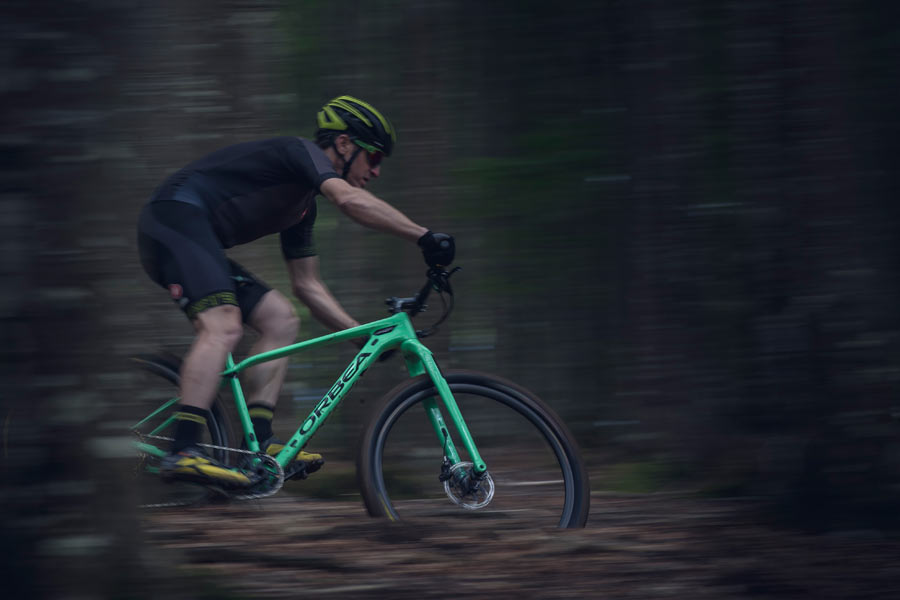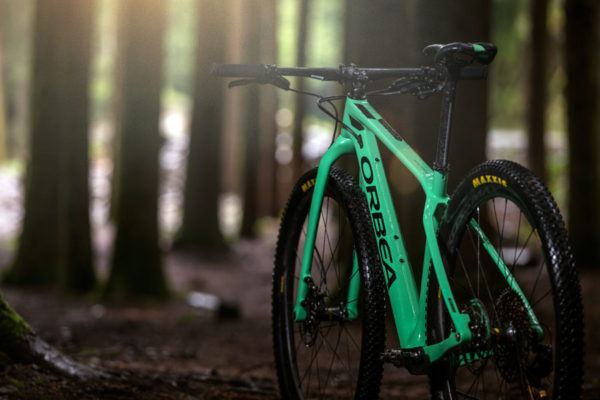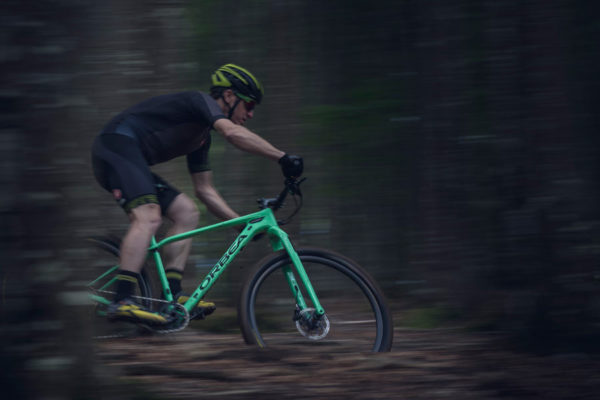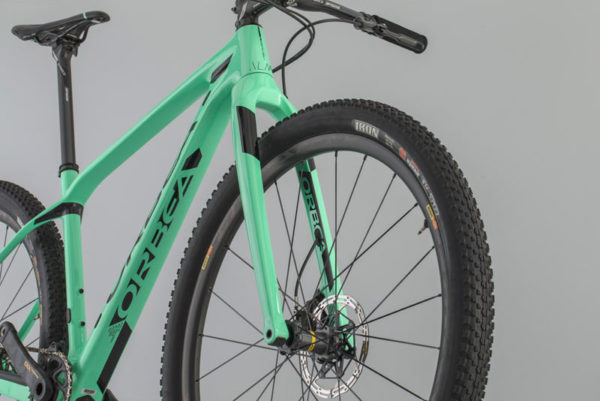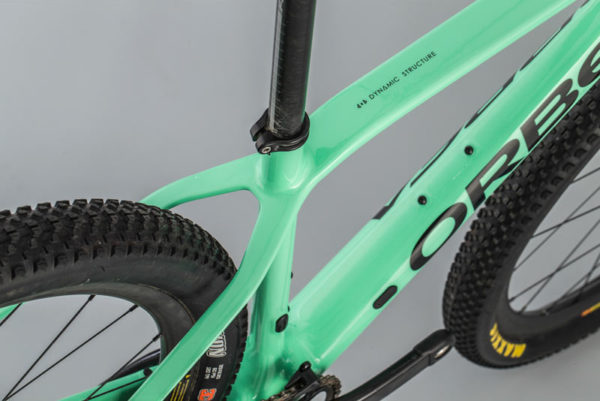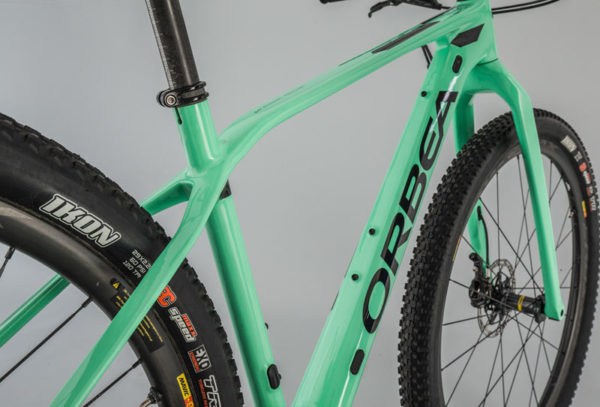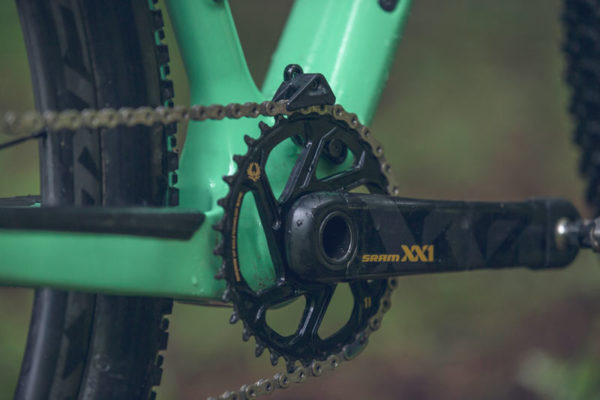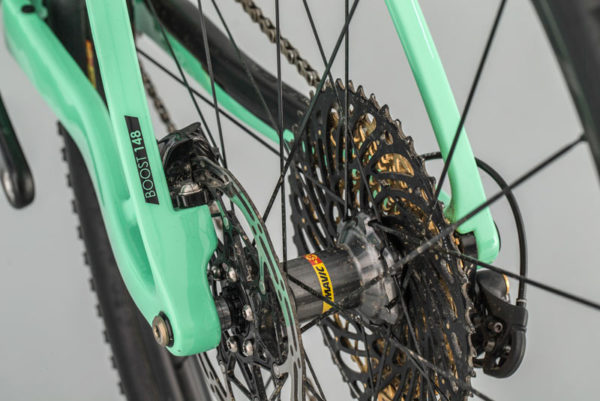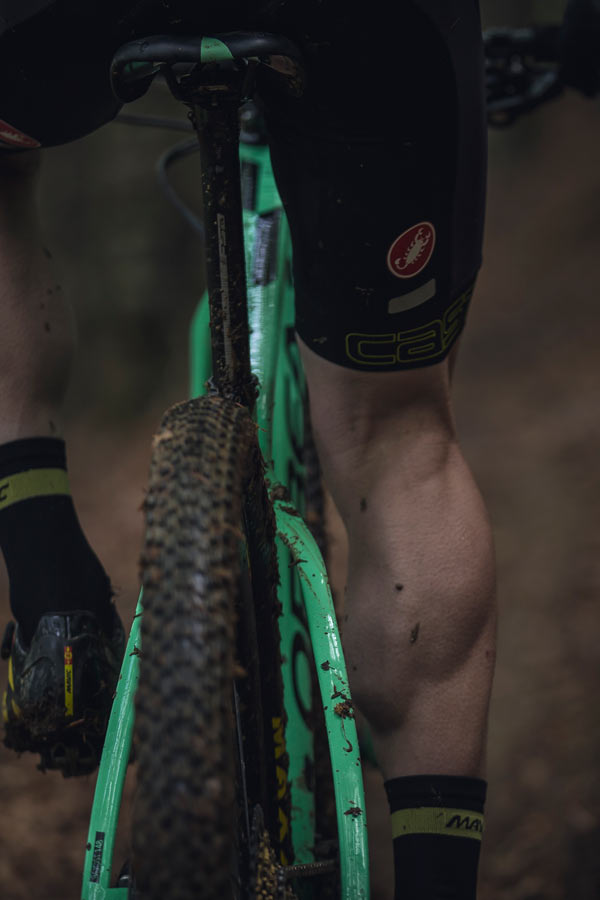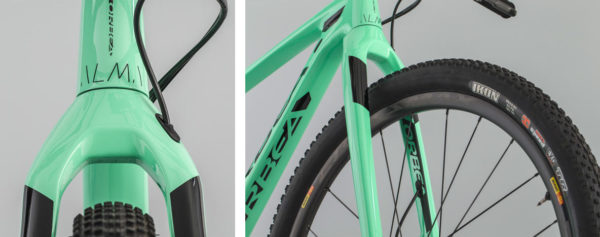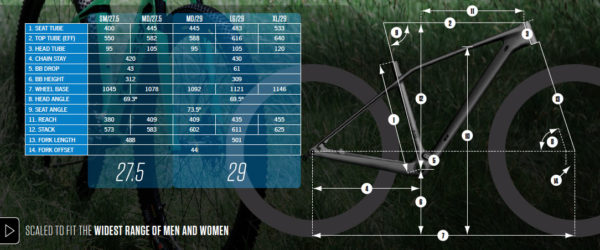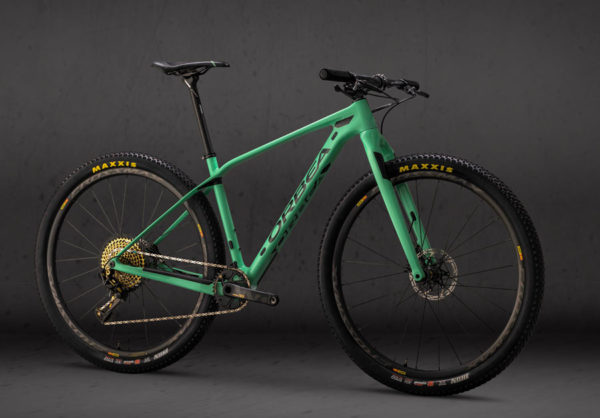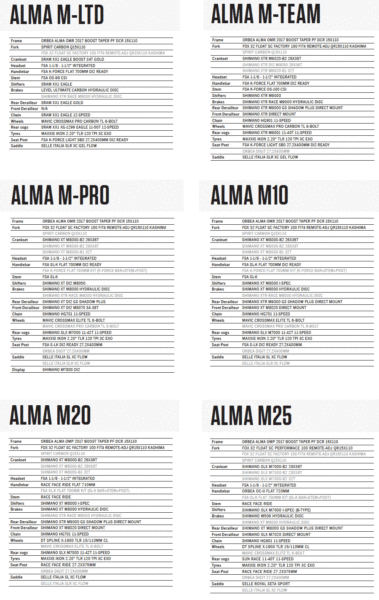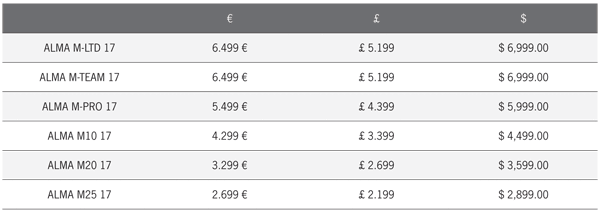Much like the recently updated Oiz full suspension race bike, Orbea’s flagship XC hardtail gets the Boost axle spacing and frame refinements to make it lighter and stiffer. It also gets more comfortable and efficient. By the numbers, it’s an 950g frame in top form and sees 25% improvement in stiffness and 10% more compliance.
It also gets a brand new full carbon rigid fork, their first, designed to complement the bike’s handling and offer the lightest overall package for less technical race courses…
To make it the lightest Alma frame ever, they reworked the carbon layup and improved the construction process. The OMR (“Race” top level frames) use minimal overlap (5-7mm versus 10+mm on the OMP “Performance” frames) and higher modulus fibers where needed. The frames are made using EPS molds rather than bladders, which provide smoother inside walls and better compaction, which yields a lighter frame. Continuous fibers run through the bends where possible so less over wrapping is needed in the first place. Lastly, anywhere they could use full carbon, they did, minimizing bonded or co-molded alloy parts.
Orbea’s 4×4 Dynamic Structure places a flatter, more compliant top half of the bike over a stiffer, twist-resistant lower half. So, there’s good power transfer where you need it, and a little bump and vibration absorption everywhere else. The effect is compounded by their placement of the bends. Notice the top tube bends just in front of the seat tube, and the seatstays go wide and flat and thinner than before. Gone are the pushed back seatstays that created an additional bend behind and above the rear axle.
All cables are run internally, with options for all the usual suspects except stealth dropper posts. But, Orbea specs and offers their Digit manually adjustable quick drop seatpost. It’s clever, and lighter than a full dropper post, but not quite as user friendly during an XC race’s frenzy. Skip it and you can run any 27.2 post, of which there are plenty of good options that add even more compliance. There are accommodations for internal Di2 batteries in the seat tube and down tube.
A direct mount front derailleur attachment point sits above a dual purpose chain guide/guard. On a double chainring, it rests close enough to the small chainring to keep the chain from dropping onto the bottom bracket shell. For 1x, just mount the chain guide to the same spot for a little extra insurance.
Boost spacing opens up tire clearance, fitting up to a 2.4″ tread (up from 2.25″ for prior model). Shimano groups get a direct mount hanger, and all builds use this stealth tooled axle. The Boost spacing also let them shorten the chainstays to 420mm on 27.5″ frames and 430mm on 29er. As a whole, it boosts rear end stiffness a claimed 15%.
Up front is the new Spirit carbon fork. A full carbon construction, including the integrated bearing race, keeps it to just 575g. It’s compatible with both 100mm and 110mm Boost axles with up to 2.8″ tire clearance. Axle to crown height is 480mm (29er version), which they say mimics a 100mm suspension fork set at 25% sag. It’s available separately or as part of a complete bike and can even be custom painted to match the frame through their MyO program.
In addition to the shorter chainstays, the BB has dropped 2mm and the headtube is 1º slacker, stack height is a little lower, and the seat tube is just a bit steeper, giving it more aggressive descending and putting the rider in a more powerful position. Like their others, they offer the S/M sizes in 27.5″ wheels and the M/L/XL in 29er.
